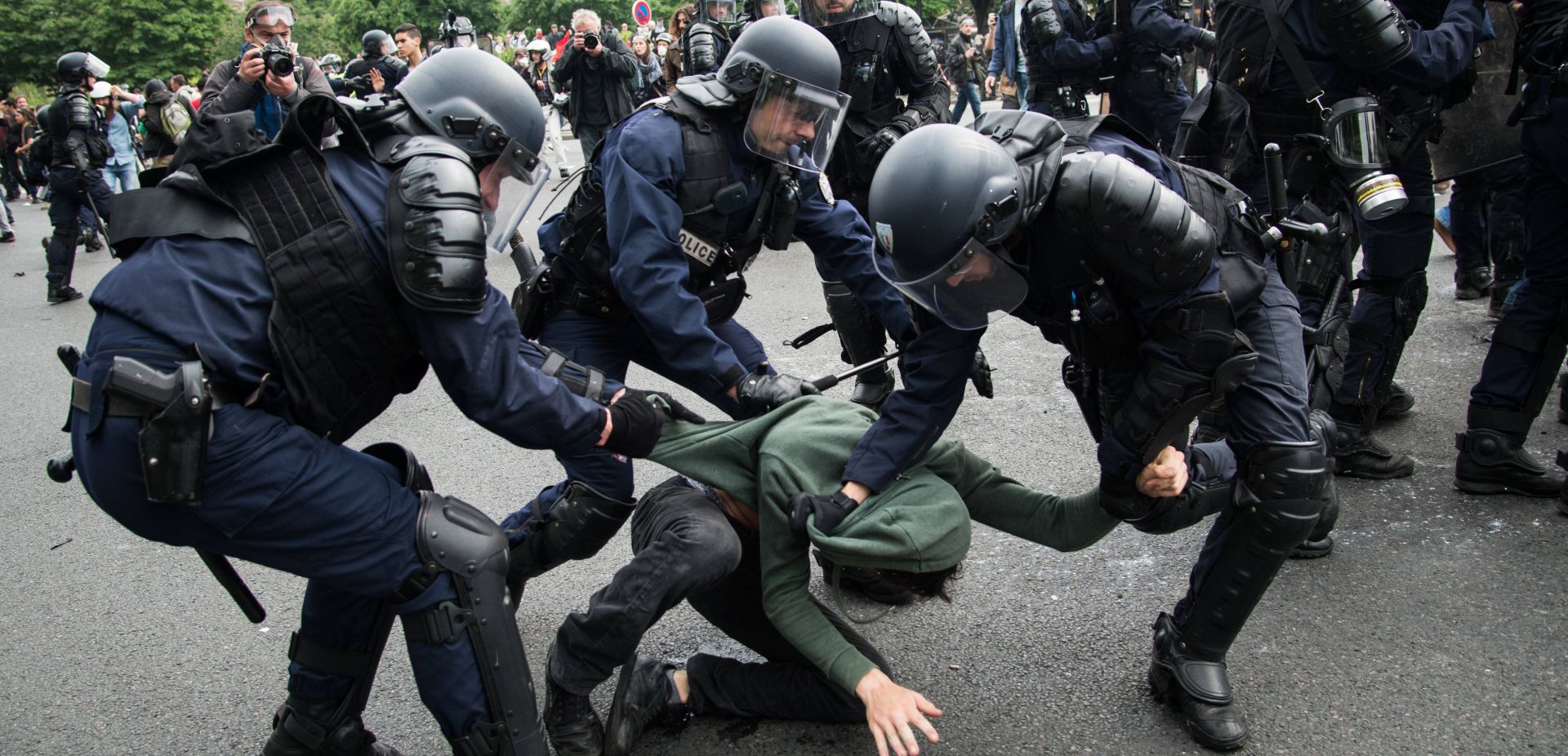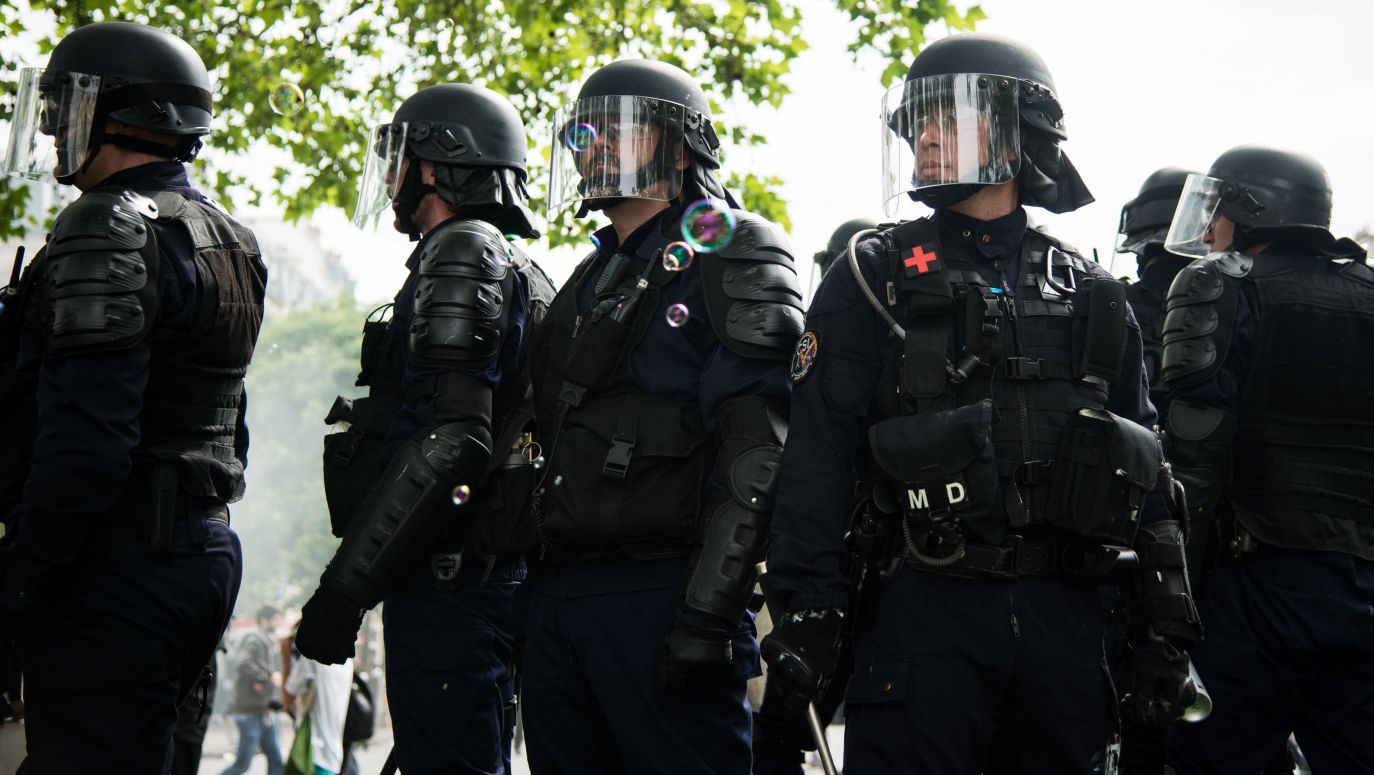Despite intense pressure from Swedish diplomacy, France did not participate in this programme, which has unofficially become a benchmark for the modern doctrine of policing in Europe. So maybe, just maybe, the police train towards liberalism, human rights and a bright future has departed and the French police force has been left at the stop of the law and order fetish?
The army is keeping order
Perhaps the explanation for the particular police brutality on the Seine should also be sought in France's long history and its identity as a state that used repressive methods against its citizens, particularly during the Revolution and the rule of Napoleon Bonaparte.
It should be noted, by the way, that the police as we know them today, especially the special units for maintaining public order, is a rather recent institution in French history. To put it simply, in the era of the ancien regime, the ruler entrusted this kind of thankless task to the army. During the French Revolution, the first formation with competences resembling those of a modern police force, the National Guard, appeared for a short time. The famous idealist Marquis La Fayette wanted to make it a 'national army', but after the Thermidorian Coup, it ended up firing cannons at sanculots (the most radical revolutionaries) in the Faubourg Saint-Antoine and quelling riots instigated by royalists and federalists.
After the Revolution came Bonaparte, who used, among other things, soldiers on leave to 'manage crowds' in order to circumvent the ban on the assembly of forces of order in the vicinity of government institutions, followed by successive monarchies and republics, one more repressive than the other towards its own peoples and citizens.
Under the Third Republic (1870-1940), as in previous periods, the military continued to be a key element in the arsenal of repression in the hands of the civilian authorities, and also when those authorities were leftist. The head of the Interior Ministry and two-time French Prime Minister Georges Clemenceau (otherwise a left-liberal politician) boasted of being 'the first policeman in France' and often did not hesitate to send soldiers against strikers.
Using the military to maintain order, however, is risky. What worked in the pre-industrial revolution era did not work from the late 19th century onwards.
On the one hand, there was the threat of fraternisation of rank and file soldiers and non-commissioned officers with striking workers or demonstrating farmers, as in 1907 when the rebellious 17th Infantry Regiment turned its rifles butt upwards, refusing to shoot at protesting vineyard workers in Béziers. The army, on the other hand, is the risk of using on the home front means from an arsenal intended for the external enemy and shooting into crowds where a baton would have sufficed, as during the miners' demonstration in Fourmies in 1891, where nine people fell from bullets.
Vichy government centralises
It was only after the First World War that the French political class came to the conclusion that a special unit was necessary to maintain order in a situation of social turmoil and the emergence of increasingly violent dissenting currents, especially communist ones. Thus, in 1921, the Mobile Guard was created, not entirely civilian as it belonged to the gendarmerie, which in France is part of the armed forces. It was at the hands of its officers that demonstrators died on 6 February 1934 in the Place de la Concorde.
Paradoxically, the first police, or civilian, units to 'manage crowds' were the work of the Vichy government, when the armistice provisions with Germany (and in practice the surrender) forced the collaborationist French authorities to reduce the size of the Mobile Guard. During the Second World War and the German occupation, the Vichy government took state control of the local police forces, which had previously been subordinate to the municipal authorities, merging them with the 'Sûreté' (criminal service) and with units subordinate to the Paris prefecture. This created a state police force, and within it the Mobile Reserve Groups.
 SIGN UP TO OUR PAGE
SIGN UP TO OUR PAGE

The Vichy government, not having to reckon with parliament, made the necessary reforms. The statification of the police, in keeping with the long-standing centralising nature of the state, took place in August 1941, a very specific context of foreign occupation and quasi-civil war, when the priority was to protect the state rather than to serve the public. Local police or municipal guards were transformed into state service units, taking them completely out of the control of local authorities and placing them under the authority of prefects: representatives of the government.
The recruitment and careers of police officers, which used to be essentially local, have become statewide: officers are assigned on an as-needed basis to police stations throughout the country, regardless of their region of origin, so that most police officers are not tied to the community in which they work.
Since seniority determines the possibility of being transferred to another region, the least experienced junior officers are assigned to the most difficult areas, from where they flee as soon as they have worked enough. It is estimated that in the Paris region, which has a reputation for being the most difficult, a third of staff are transferred every year, which is obviously not conducive to familiarity with the local population and specifics.
The Vichy reform is still a cornerstone of the modern French police force. The criminologist Xavier Raufer notes curiously that the map of the locations of police stations drawn up at the time has hardly changed to this day.
After 1944, the Vichy police were not abolished, but only transformed the units for suppressing demonstrations into the Republican Security Companies, the notorious CRS, which still exist today. The changes were not helped by the turbulence of history. The tensions after the liberation of the country, then the Cold War, followed by decolonisation, the Algerian War, the trauma caused by the events of May 1968 and the contemporary urban revolts, as in 2005 in red-hot immigrant suburbs, and the rise of Islamic radicalism have prompted and are prompting the maintenance of a strong repressive apparatus in order not to weaken the state.
For many French people, therefore, the brutality of police repression is to some extent justified: although image-damaging, it is necessary from the point of view of the raison d'état.
– Adam Gwiazda
– Translated by Tomasz Krzyżanowski
TVP WEEKLY. Editorial team and jornalists


 SIGN UP TO OUR PAGE
SIGN UP TO OUR PAGE
 The Vichy government, not having to reckon with parliament, made the necessary reforms. The statification of the police, in keeping with the long-standing centralising nature of the state, took place in August 1941, a very specific context of foreign occupation and quasi-civil war, when the priority was to protect the state rather than to serve the public. Local police or municipal guards were transformed into state service units, taking them completely out of the control of local authorities and placing them under the authority of prefects: representatives of the government.
The Vichy government, not having to reckon with parliament, made the necessary reforms. The statification of the police, in keeping with the long-standing centralising nature of the state, took place in August 1941, a very specific context of foreign occupation and quasi-civil war, when the priority was to protect the state rather than to serve the public. Local police or municipal guards were transformed into state service units, taking them completely out of the control of local authorities and placing them under the authority of prefects: representatives of the government.



